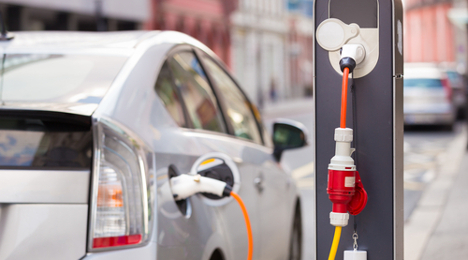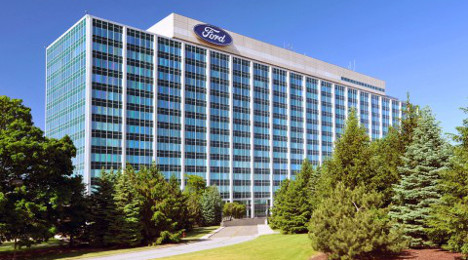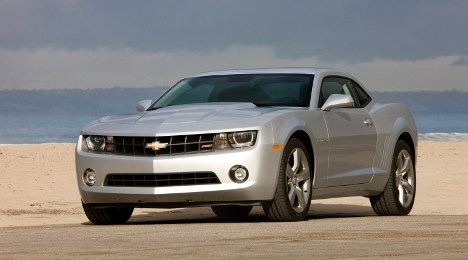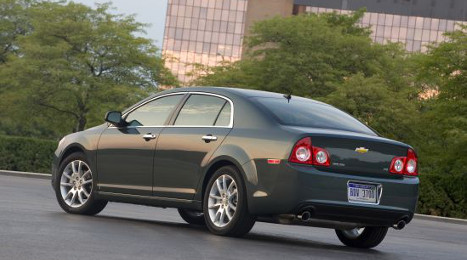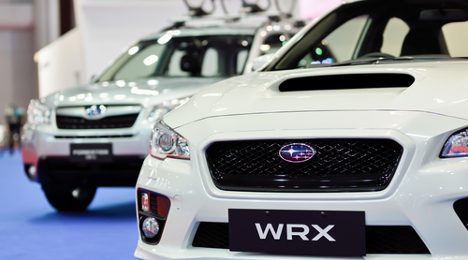Customer satisfaction with light vehicles fell to the lowest it’s been in over a decade in light of the increasing nature of both recalls of various nature as well as the increase in vehicle prices.
That’s according to the American Customer Satisfaction Index, or ACSI, and the results of its ACSI Automobiles Report 2015 released on Tuesday.
The report, which is based on 4,294 customer surveys collected in the second quarter of this year, found that the overall customer satisfaction with automobiles fell by 3.7 percent this year compared to 2014, ranking a 70 on ACSI’s 100-point scale, and tallying the third straight year of satisfaction decreases.
“While it is true that all cars are now much better than they were 10 to 20 years ago, it is alarming that so many of them have quality problems,” said Claes Fornell, ACSI’s chairman and founder. “The number of recalls is at an all-time high. This should not happen with modern manufacturing technology and has negative consequences for driver safety, costs and customer satisfaction.”
Of the 27 brands ranked by ACSI, 15 saw a drop in customer satisfaction while only 2 (Acura and BMW) saw an increase.
Lexus became the new frontrunner of the bunch, with an average satisfaction ranking of 84 out of 100 (unchanged from 2014), dethroning last year’s top make, Mercedes-Benz, by 1 point (which fell from 86 to 83). Acura and Lincoln both scored an 83 out of 100 for 2015.
The bottom three makes in customer satisfaction were all Fiat Chrysler brands: Fiat (73), Chrysler (74) and Jeep (75), while FCA accounted for 4 of the bottom 5 (Dodge and MINI both scored a 76 out of 100 on the ACSI scale).
According to David VanAmburg, ACSI’s director, it’s not just recent recall news affecting customer satisfaction.
“Higher prices are clearly hurting car buyer satisfaction, but low prices also have artificially inflated satisfaction in the years prior,” VanAmburg said. “The government’s Cash for Clunkers program helped push driver satisfaction to its highest level ever in 2009 — and heavy discounting as the economy recovered kept satisfaction up for a while. The customer satisfaction levels the auto industry is seeing now are more consistent with historical ACSI data.”
Import and luxury brands made up the top eight manufacturers in customer satisfaction in ACSI’s results. Looking purely at the domestic brands, with the help of Lincoln, Ford maintained the highest average customer satisfaction (81), followed by General Motors (79) and FCA (75).
To check out the full rankings from ACSI, download the free report here.
While men might be more interested in electric- and diesel-powered vehicles, women may be more open to the integration of technology in vehicles for the purpose of navigation and safety concerns.
These are the results of two completely separate studies on how men and women feel about varying levels of technological advancement and fuel types in automobiles.
First, according to the annual Jabian Automotive Industry Survey, a blind survey of 1,045 drivers in North America showed that 38 percent of women believe that driverless cars are the way of the future, compared to just 21 percent of men. Fifty-four percent of those women said they would pay for an application that allows their vehicle to communicate service needs prior to service, while only 38 percent of men felt the same.
“It’s interesting to see how open females are to more technology in and around the use of automobiles and automotive service,” said Jenni Crenshaw, Jabian Consulting’s executive director. “When diving into the numbers, we see that women want to utilize technology for convenience and empowerment, while men tend to favor its use for efficiency and entertainment.”
The latter bit, about men favoring efficiency, may have a role to play in the next study.
According to recent findings from a Harris Poll of 2,225 adults in the United States surveyed online toward the end of May, 25 percent of men, compared to 17 percent of women, said they would consider purchasing an electric vehicle. The same was true for diesel-powered vehicles, with 28 percent of men saying they would consider one, compared to 11 percent of women.
Millennials were the most acceptant of the idea of owning a hybrid, with 57 percent saying they would consider owning one. The overall interest in hybrids across America, however, has remained relatively unchanged since 2013, with 48 percent of all surveyed saying they would consider a traditional hybrid the next time they’re in the market for a vehicle.
Amongst those surveyed in the Harris Poll, the primary concerns for buying a pure electric vehicle related to price (67 percent), driving range (64 percent), maintenance costs (58 percent), reliability (53 percent), performance/power (50 percent) and the fact that it is still a fledgling technology (42 percent).
To view the full Harris Poll, click here.
Say that four used-car shoppers happen search for your vehicle make online. It’s likely that three will then submit a lead for that specific brand, according to a new whitepaper from CarStory.
And the make most likely to generate “lead loyalty?” It’s Ford.
The Lead Loyalty and Intent to Buy Online whitepaper indicates that 84.4 percent of used-car shoppers who search for Ford will end up submitting a lead for that brand.
Mercedes-Benz was second (83.8 percent lead loyalty) followed closely by BMW (83.3 percent). Rounding out the top five were Dodge (81.5 percent) and Chevrolet (81.4 percent).
Also scoring above 80 percent were Chrysler (81.1 percent) and Volkswagen (81 percent).
Another interesting finding from CarStory was the three pairs of brands with “reciprocal exchanges of lead submission,” those being:
- Toyota and Honda
- Chevrolet and Ford
- BMW and Mercedes-Benz
You might ask, what does the term “reciprocal exchange” mean, exactly?
Well, take one example CarStory gives in its whitepaper.
Toyota has 80 percent lead loyalty and Honda is at 78 percent, which is “fairly average,” CarStory said.
“But, when used-vehicle shoppers search for one of those brands, and then submit a lead on a different brand, it’s likely the other,” the company explains in the paper.
“Specifically, used-vehicle shoppers who first search for Toyotas end up submitting leads on Hondas 4.4 percent of the time,” it continues. “Conversely, used-vehicle shoppers who first search for Hondas end up submitting leads on Toyotas 4.8 percent of the time. Honda also enjoys a similar 4-percent lead conversion rate from users who initially search for Acura (a division of Honda).”
Detailing more about cross-shopping, CarStory also had this interesting nugget.
If a GMC used-vehicle shopper submits a lead, there is nearly a one in 10 chance (9.3 percent) that he or she will submit a lead for a Chevy. That’s almost twice as high as any other single brand cross-over, CarStory said.
Sharing some overall commentary, CarStory chief marketing officer Chad Bockius said: “This brand loyalty and disloyalty data gives salespeople the ability to quickly pivot if the customer’s needs are not being met by the core brand inventory. The knowledge of what the 'next best brands' are for the consumer is invaluable— especially if the shift in sales strategy is fluid and perceived as intuitive or personalized by the consumer.”
Interestingly enough, the paper also points out that there is a much greater likelihood a shopper will submit a lead for a non-luxury brand than a luxury brand.
In fact, just to give one example, the lead submission rate for Honda is 67 percent stronger than that of Lexus. Lastly, the study points out a rather disciplined approach by used-car shoppers: most will stay within their original budget.
For more insight from CarStory, be sure to catch Bockius at the CPO Forum during Used Car Week. He is conducting a workshop along with Volkswagen of America senior manager of CPO and used-vehicle operations Michael Ashton at 11 a.m. and 3 p.m. on Nov. 16.
The seemingly constant record-breaking sales is certainly one way to measure the success of the certified pre-owned market, but further evidence can also be found within the traction CPO is generating online.
Take Autotrader, for instance.
Used-vehicle listings on its website in May climbed 4 percent from the year-ago period, while certified pre-owned listings jumped 12 percent. Compare that to May 2014, when CPO listings increased 8 percent year-over-year.
So, at least with that particular metric, the upward slope has gotten a good bit steeper.
Autotrader also shared the 20 CPO models generating the most searches on its website for May, as listed below.
General Motors led the way with five of its models in the top 20 and Toyota was next with four. Ford had three models on the list, including the No. 1-ranked F-150.
1. Ford F-150
2. Chevrolet Silverado 1500
3. Honda Accord
4. BMW 3 Series
5. Mercedes-Benz E Class
6. Ford Mustang
7. Jeep Grand Cherokee
8. Porsche 911/911Turbo
9. Toyota Tacoma
10. GMC Sierra C/K1500
11. Jeep Wrangler
12. Chevrolet Corvette
13. Chevrolet Camaro
14. Chevrolet Tahoe
15. Toyota Tundra
16. Mercedes-Benz C Class
17. Toyota Camry
18. Toyota Highlander
19. Ford Explorer
20. Volkswagen Jetta
There has been a change at the top when it comes to the add-on features that CarMax’s used-car buyers most often purchase.
The best-selling add-on for these used-car buyers is now leather interior, according to CarMax sales data analyzed in the company’s 2015 Used Car Shopping Report.
Remote start technology was the most popular add-on last year and ranked second this year. Third was theft recovery systems, fourth was collision avoidance features and fifth was headrest video systems.
Leather interiors may have topped the list nationally, but there were some regional differences. Remote start technology, for one, is still No. 1 in the Northeast and Midwest, where the climate can get a little chillier than other areas of the country.
Meanwhile, leather interior is tops in the South and West.
Another add-on gaining some traction is what the company describes as convenience/entertainment features and luxury upgrades, according to a survey of 1,000 adults conducted by Ipsos Public Affairs on behalf of CarMax. The report gives navigation systems and satellite radio as examples.
Cliff Wood, executive vice president of stores for CarMax, said: “When it comes to add-ons and upgrades, features that keep consumers connected and comfortable continue to be popular.”
Wish List Upgrades
An Ipsos Public Affairs survey on vehicle convenience and entertainment or luxury upgrades, which was commissioned by CarMax, sheds a bit of light on the aspirations of used-car shoppers.
“When asked if purchasing a used car were to make convenience upgrade features suddenly more affordable, just under a third of respondents (30 percent) said that they would be most interested in a navigation system, while one in five would opt for remote start (21 percent),” CarMax said in its news release on the report. “Park assist is more popular among Millennials than Baby Boomers (14 percent versus 9 percent).”
Drilling down into entertainment or luxury upgrades, tops on the list were satellite radio (19 percent) and stereo systems (18 percent). Next were leather interiors and sunroofs.
Peeking further ahead to upgrade features not yet available in used cars, the “greatest wish” cited by 23 percent of respondents was a self-cleaning car.
To see even more details about CarMax's finding, check out the inforgraphic accompanying the report.
The top-selling used car at CarMax remains the same, with the Nissan Altima collecting that honor for two consecutive years now, and four of the five best-sellers are import-brand vehicles.
But domestics have made some big plays in the pre-owned space, based on numbers in CarMax’s 2015 Used Car Shopping Report, which looked at more than 555,000 CarMax sales nationwide between March of last year and February of this year.
For starters, the Chevrolet Malibu bumped the Toyota Camry for the No.2 spot on the list, one of five domestic models in the top 10. (The Camry was No. 4, sandwiched between the Honda Accord and Honda Civic).
“The majority of domestic vehicles moved up in rank above foreign cars, compared to last year,” CarMax noted in its news release.
And four of the top 20 were from Ford, which also demonstrated cross-generational appeal.
“Ford vehicles especially appeal to Gen Xers, who purchased Fords more than any other age group, earning three spots in that generation’s top 10 vehicles,” CarMax said in a news release.
“Ford also scored with Millennials, though their model preferences differed. Older generations most often purchased Explorers, Escapes, and F150s, while millennials purchased the Fusion and Focus,” the company added.
The Big 3, in general, was a hit with Generation X, as they were the most likely to buy domestic. Six of their top 10 purchases were from the Big 3.
Dealertrack Technologies’ TradeTracker Used Vehicle Market Report for the month of April was recently released, reflecting another month of trade-in consistency for Canadian dealers.
The Ford F-150 was once again the overall most-appraised vehicle in Canada, followed by the Toyota Corolla and the Honda Civic sedan, all following three-month and year-long trends. The Ford Escape and Mazda Mazda3 rounded out the top five.
The F-150 remains the domestic vehicle most appraised by domestic dealers. The Corolla was the top import vehicle most appraised by import dealers while the Escape was the domestic vehicle most appraised by import dealers. The Mazda3 also remained in its place as the top import vehicle appraised by domestic dealers. All four of these vehicles repeated three-month and year-long trends.
As for vehicles most looked at by trade-in owners, the Escape reclaimed its position as the domestic vehicle most looked at by import owners. The rest of the stats mirrored last-month's results.
The TradeTracker brand of the month, Hyundai, reflected many of these consistencies. The Mazda3 was the off-make vehicle most appraised by Hyundai dealers, followed by the Ford Focus and the Civic sedan. Trade-in customers visiting Hyundai dealers in Canada were most interested in Hyundai’s Elantra, Tuscon, and Santa Fe, respectively.
Though last year’s high gas prices may have pushed some consumers into more fuel efficient rides, with 2015’s low rates, it seems shoppers are making a compromise.
Though not swinging back to full SUVs, TrueCar projects compact utilities will become the top-selling U.S. vehicle segment this year, for the first time.
Backing up this assertion, TrueCar shared that for Q1, market share for compact utilities — with Honda's top-selling CR-V, the Ford Escape, Chevrolet Equinox and Toyota's RAV4 leading the pack — grew to 15.6 percent to beat out compact cars at 15.1 percent and midsize cars at 14.7 percent.
"Car-buyers' shift in preference to utilities from sedans is a clear secular trend we see in TrueCar demand data, transaction price data and sales results," said John Krafcik, president of TrueCar. "Given how well compact utilities meet consumer functionality and fuel-economy needs, smart automakers have leaned into the segment and benefitted from significantly higher revenue and margins."
And predicting full-year results, TrueCar analysts estimate the segment will make up 15.9 percent of total new light vehicles sales. This is compared to compact cars, which is expected to hold 15.1 percent share at the end of the year.
Compact utilities have been gaining steam since 2000. According to TrueCar data, the segment has seen a 12.4-percent spike in market share since the turn of the century. Back in 2000, they only represented 3.2 percent of light vehicle sales.
Two factors have recently combined to ramp that interest in these vehicles even more: low fuel prices and more segment capacity, TrueCar reported.
And interestingly, compact utilities are the only segment to have seen double-digit discount growth in the past year.
“There is also a relationship between incentives and gasoline prices. When gasoline experiences a notable price drop, compact utility incentives rise,” TrueCar analysts reported. “Since the segment is a large revenue generator with strong margins, automakers prioritize retail incentives over fleet sales to drive volume.”
Honda is performing particularly well in the segment. In fact, the the CR-V was the automaker’s top revenue source in Q1.
According to TrueCar, CR-V generated $2.0 billion, or 26 percent of Honda's $7.7 billion first-quarter revenue. Compare this to the popular Civic, which contributed only $1.3 billion to total Q1 revenue.
"Honda has embraced the secular shift to utility vehicles and made appropriate adjustments in their product and capacity plans," said Krafcik. "CR-V was their best-selling vehicle in April, it's been their highest revenue product this year, and likely drives more total profit to American Honda's bottom-line than any other model."
Consumer car dealer review site DealerRater announced the findings of its 2015 Consumer Rating Index. Based on nearly 416,000 reviews taken between March 2014 and March of this year, the company ranked manufacturers, on a dealership level, based on a five-point scale.
Ranking first among the mass market brands was Subaru, with a score of 4.757 out of 5. Lexus ranked highest among luxury brands, with a score of 4.824.
“Consumers are adding online reviews as a critical element to the car-shopping equation,” said Gary Tucker, DealerRater’s chief executive officer. “The Consumer Rating Index allows car shoppers to evaluate how brands stack up against each other in terms of customer satisfaction at the dealership level.”
Rounding out the top three for the mass market companies were MINI (4.746) and Honda (4.733) while the rest of the top three for the luxury brands were Mercedes-Benz (4.781) and Porsche (4.749).
DealerRater’s rankings for luxury brands were based on ratings with at least 500 reviews while mass market brands were required to have at least 1,000 reviews. The rankings are based on numerical averages of all reviews that are attributed to a specific OEM. For a complete listing of the ratings, click here.
Connectivity may be the best feature to plug when talking to a used-car shopper. And whether or not that car is in good shape may be the most crucial piece of information you pass along to that shopper.
That's according to a white paper from CarStory, which among other areas, investigated the top features used-car buyers want and the most important information they need in buying a car.
Starting with top features, the paper — titled How to Convert Used Car Shoppers to Buyers — found that three of the top “must-have” features on a used-car purchase are MP3, Bluetooth and an iPod adapter.
CarStory, a provider of crowdsourced data and analytics on pre-owned vehicles, surveyed a random pool of the paper’s participants, all ages 18 to 65.
These participants were given a list of the top 25 used-car features that CarStory’s data science team found to be in high demand or heavily influential on used prices, and they were asked to select “must-haves” from that list. (More than one feature could be chosen).
More than 40 percent chose MP3 and 30 percent picked Bluetooth. Over 25 percent chose iPod adapter, putting it on the same level as high-performance tires. Fifth on the list was heated seats, with a hair more than 25 percent choosing that option.
Also scoring above 20 percent were keyless entry, remote start, rear-view camera and navigation system. Right at 20 percent were sunroof and all-weather package. The remaining 14 features listed were below 20 percent.
Beyond the features of the car, CarStory also looked into the vehicle description points that resonate with used-car buyers.
“For this exercise, we gave the survey participants a list of details that descriptions of used cars commonly include,” the company explained. “We asked participants to rate the importance of each detail using a sliding scale.”
The top detail?
Vehicle condition, which got a score of 81 out of 100, according to CarStory’s January survey of online used-car shoppers.
Next up was accident history (77), followed by service history (75), listing price (74) and value of the vehicle (73).
The complete list of most important details is below:
Condition 81
Accident History 77
Service History 75
Listing Price 74
Value of the Vehicle 73
Make 72
Mileage 71
Price Compared to the Market 68
Dealership’s Reputation 66
Selling Price of Similar Vehicle 65
Year 65
Mileage Compared to Similar Vehicle 64
Comfort Features 60
Cost of Ownership 60
Efficiency 59


